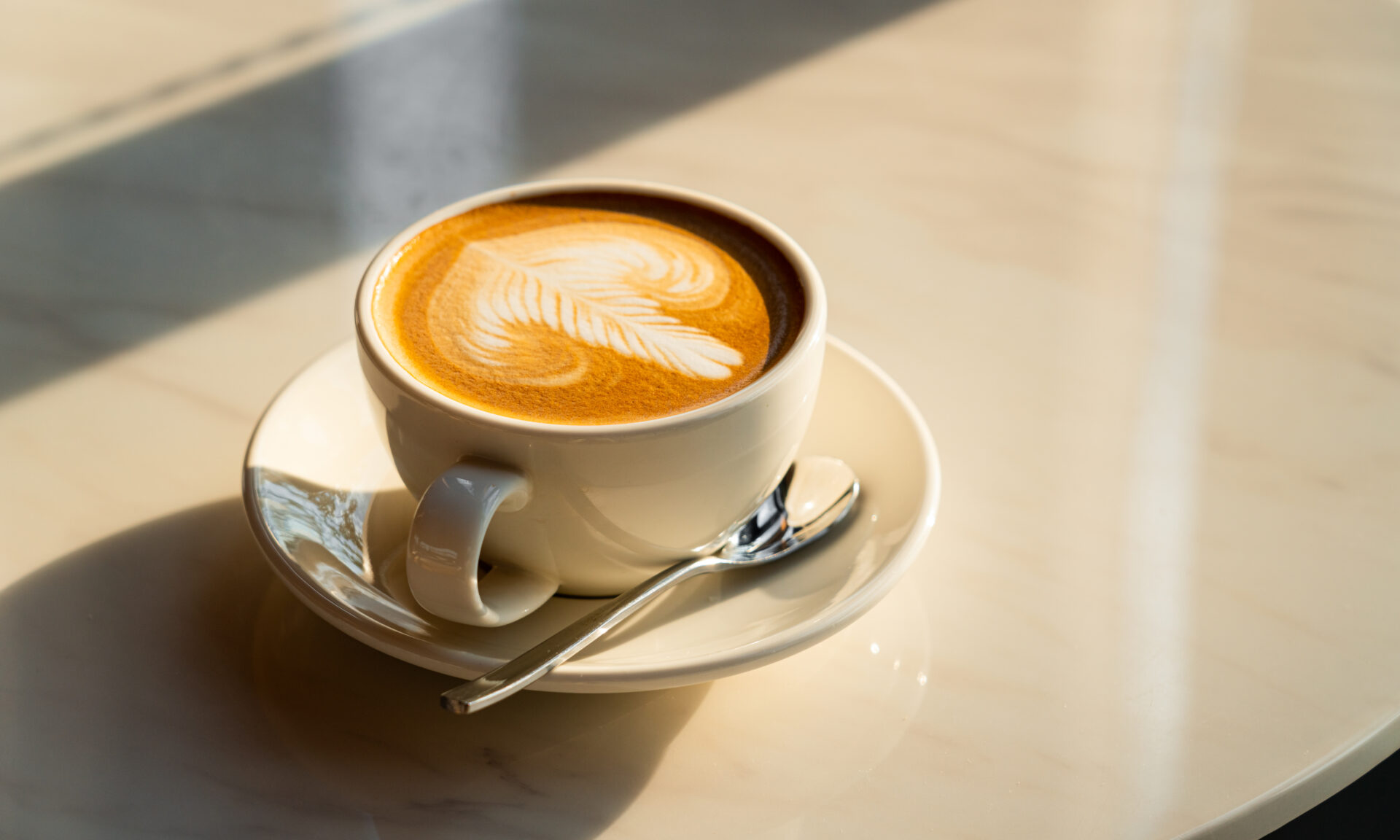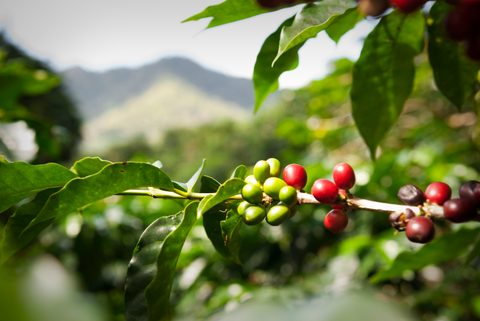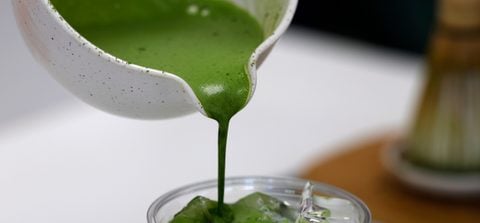Roundup: Tariffs Are Coming for Your Coffee (and Matcha)
Tariffs brew trouble for the coffee industry; matcha supply no match for demand; Americans and alcohol.

Many, or all, of the products featured on this page are from our advertising partners who compensate us when you take certain actions on our website or click to take an action on their website. However, this does not influence our evaluations. Our opinions are our own. Here is a list of our partners and here's how we make money.
A weekly look at what's new and trending in personal finance.
Coffee prices are on the boil: Two-thirds of American adults drink coffee every day, according to the latest annual report from the National Coffee Association (NCA), and we down an average of three cups daily.
That adds up to hundreds of millions of cups each day, making it the most-consumed beverage in America, beating out bottled water, tea, juice and soda.
Most of us brew it at home, but enough of us drink it on the run to keep more than 17,000 Starbucks, almost 10,000 Dunkin’ Donuts and tens of thousands of other coffee houses afloat. Total economic impact of the coffee industry in the U.S. according to a 2023 NCA report: $343.2 billion, supporting 2.2 million jobs.

The thing about coffee, of course, is that we don’t grow it ourselves. In fact, less than 1% of what we consume is grown in the U.S., primarily in Hawaii and Puerto Rico, which lie within the tropical “coffee belt.” No other part of the country is suitable for large-scale coffee production.
That hasn’t spared coffee from the barrage of tariffs unleashed in recent months by President Donald Trump. And those tariffs are knocking the coffee industry sideways, particularly the levy on Brazil — by far the world’s biggest producer of coffee beans. Tariffs on imports from Brazil jumped from 10% to 50% on Aug. 6.
We talked to coffee insiders for a deep dive on what tariffs are doing to the market, and the news for coffee drinkers isn’t cheery. Virtually all coffee-producing nations are now subject to tariffs. Those tariffs are paid by importers, who pass them along to roasters, who will, in the end, pass them along to … you.
This is on top of a steep climb in the retail cost of roasted coffee even before tariffs kicked in. Take a look.
Price hikes in recent years are the result of droughts in Brazil and in another big producer, Vietnam. And those droughts have been tied to climate change, which is predicted to vastly change the coffee-growing landscape in the decades to come.
Coffee yields are already falling around the world, and reports have projected that the area available for coffee production will be halved by 2050.
So what’s a coffee drinker to do? Coffee, of course, comes in many forms, and many price points. And habits may already be shifting: the 2025 NCA report shows that 71% of coffee drinkers brewed their daily cups at home — compared to 63% in 2020. One of the roasters we talked to said he sees signs that consumers are shopping for sales more.
Of course, there are alternatives to coffee — but they’re subject to many of the same pressures.
Matcha — a green tea powder deeply rooted in Japanese tea ceremonies — is a social media staple and a growing cafe favorite across the U.S.

But the combo of online hype driving demand and new tariffs hitting imports means prices are likely to rise — and soon.
The already-pricey green tea leaves are grown mainly on small farms in Japan, where production is time-intensive — far more than most people realize. That makes it impossible to ramp up supply quickly and the few U.S. matcha growers won’t be able to fill the gap. Matcha may seem like an indulgence now, but it’s about to cost even more. Read on.
In other beverage news: The percentage of Americans who say they consume alcohol has fallen to the lowest level ever in 2025, according to the latest Consumption Habits survey from Gallup. And when you consider that Gallup has been conducting this survey since 1939 … well, that’s saying something.
In the 2025 survey, 54% of Americans reported drinking alcohol, down from 58% in 2024. Before that, from 1997 to 2023, that figure stayed above 60%. The previous all-time low was 55% in 1958, the bottom of a post-war lull in consumption.
Peak drinking? That would have been 1974 to 1981, when all-time highs of 68% to 71% were recorded.
Health concerns appear to be driving the decline. For the first time since Gallup started tracking perceived health effects of alcohol in 2001, a majority of those surveyed (53%) say drinking in moderation (one or two drinks a day) is bad for one’s health.
Beyond beverages
This week in tariffs: On Thursday, the European Union and United States announced a framework for a new trade deal. Under the framework, which the two nations are still negotiating, the EU commits to eliminating tariffs on all U.S. industrial goods and giving preferential access for a variety of U.S. agricultural and seafood products.
The U.S., in return, says it will apply “most favored nation” or 15% baseline tariffs (whichever is higher) on EU aircraft and parts, cork, lumber, semiconductors, pharmaceuticals and certain natural resources. The U.S. may also lower auto tariffs to 15% contingent on EU legislative action. The worldwide 50% tariff on steel and aluminium remains in effect.
In exchange, the EU says it will purchase $750 billion worth of U.S. energy and invest at least $40 billion in U.S. artificial intelligence chips for data centers. The EU also promises to invest $600 billion in strategic U.S. sectors by 2028 and purchase more U.S. military and defense equipment.
Listen to our Smart Money tariff update.
The markets: The major indexes were down most of the week, on disappointment over Walmart earnings and concerns about the state of the labor market and inflation. On Friday, however, markets bounced back strongly on remarks from Fed Chair Jerome Powell that boosted hopes for a rate cut in September. Meanwhile, investors await quarterly earnings next week from Nvidia — currently the world’s most valuable company by market capitalization.
Upcoming consumer data releases (from NerdWallet senior economist Elizabeth Renter):
- Tues., Aug. 26: Consumer Confidence, Conference Board — Confidence has leveled off the past several months, since dropping precipitously in April. Job availability is one exception here, and I anticipate people were still feeling pretty glum about their prospects in August.
- Thurs., Aug. 28: GDP (Bureau of Economic Analysis) — The first revisions to Q2 economic production data is likely to still show modest growth, as it is accounting for lower imports after the late-Q1 surge to get ahead of tariffs.
ICYMI:
Alaska Airlines launches new premium card: Bank of America announced it will add a second Alaska Airlines card to its portfolio, offering a host of new perks and sign-up bonus, as well as a new loyalty program — for an annual fee of $395. How does it stack up?
Survey: How Gen Z is Planning (or Not) For Retirement: Fewer than 1 in 5 Gen Zers (18%) say they’ve contributed to a retirement account in 2025, according to this analysis from our Data Studies team. Here’s advice to catch up.
Survey: Many Americans are Stressed About Money, 6 Ways to Cope: About half of Americans (51%) regularly stress about money. Find out why women stress more and which generation frets the least.
Meet MoneyNerd, your weekly news decoder
So much news. So little time. NerdWallet's new weekly newsletter makes sense of the headlines that affect your wallet.
Article sources
NerdWallet writers are subject matter authorities who use primary,
trustworthy sources to inform their work, including peer-reviewed
studies, government websites, academic research and interviews with
industry experts. All content is fact-checked for accuracy, timeliness
and relevance. You can learn more about NerdWallet's high
standards for journalism by reading our
editorial guidelines.
Related articles














